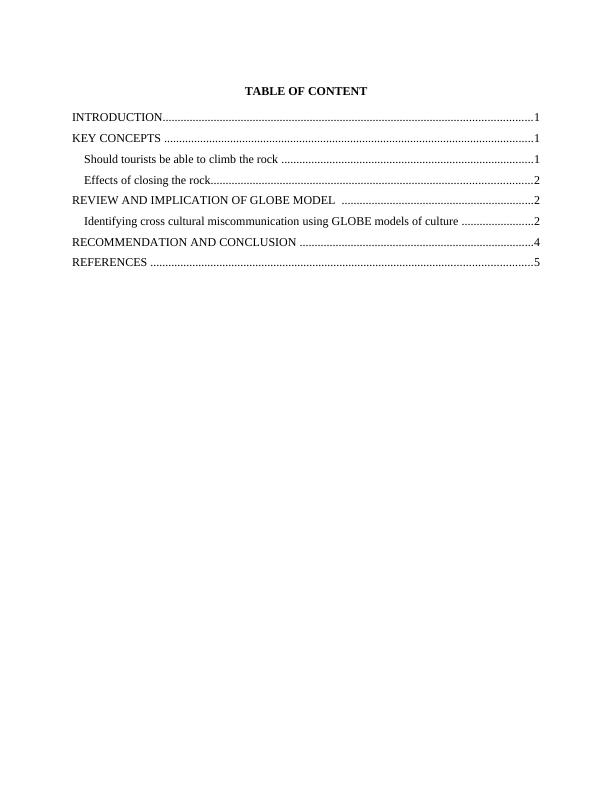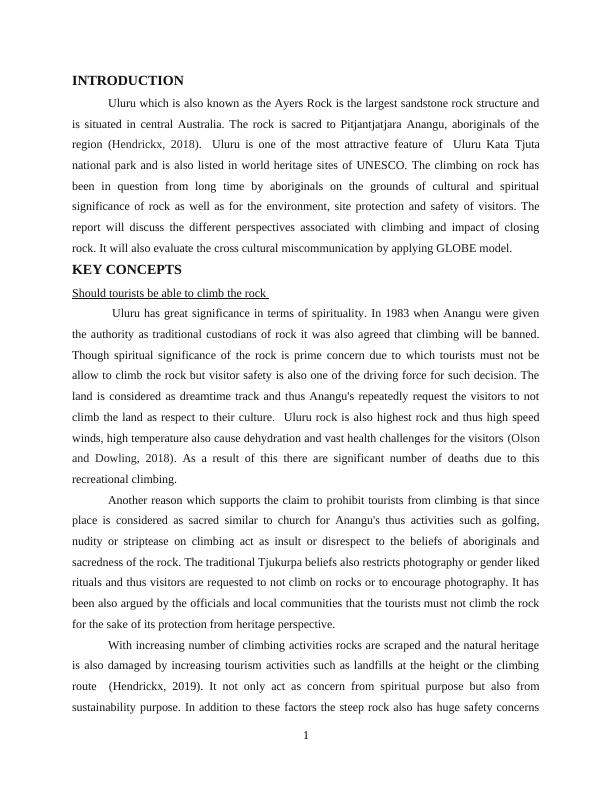Uluru: A Cultural Landform
This subject outline provides general information about the course and subject details for BUS709 Communication in Business at King's Own Institute.
7 Pages1874 Words82 Views
Added on 2023-01-17
About This Document
This report discusses the cultural significance of Uluru, the largest sandstone rock structure in central Australia. It explores the debate surrounding climbing the rock and the impact of its closure. The report also evaluates cross-cultural miscommunication using GLOBE models of culture. Recommendations are provided for promoting cultural values and resolving miscommunication.
Uluru: A Cultural Landform
This subject outline provides general information about the course and subject details for BUS709 Communication in Business at King's Own Institute.
Added on 2023-01-17
ShareRelated Documents
End of preview
Want to access all the pages? Upload your documents or become a member.
Uluru: Should Tourists Climb the Rock?
|7
|2084
|60
Development on Uluru - Advise on making an application
|4
|505
|330
Sustainable Operations and Destinations
|10
|2720
|459
Centre for Aboriginal Studies
|15
|2862
|21



